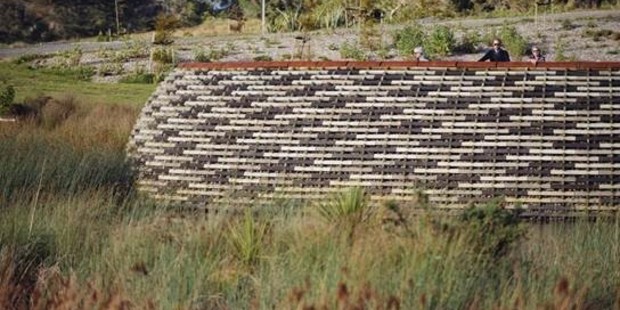Wildlife at home amid the urban sprawl
Source: NZ Herald

The people are coming – more than 100,000 of them to Auckland’s north-west in the next 15 years. But so too are the native fish.
At the same time as thousands of homes and apartments are being built to house these people, a safe ‘home’ is also being put in place for fish and other wildlife who share the area.
Two west Auckland streams flowing within spitting distance of New Zealand’s largest residential/retail development at Westgate – for years suffering the side-effects of horticultural run-off – have been ‘ecologically restored’ to provide a clean home for eels and other fish species like the banded kokopu.
Once a place Maori gathered to catch fresh water delicacies, the streams are part of a ground-breaking 22-hectare wetland development wending through and alongside the massive Westgate Town Centre project.
The centre, being developed by the New Zealand Retail Property Group (NZRPG), is the magnet for a looming population explosion in the surrounding area with estimates up to 112,000 more people will be living there by 2032.
But the eels (a fish Maori call tuna), other fish species and birds have not been forgotten. With the environmental work taking place at the site they may be about to have a population explosion of their own.
Their living space is a key part of the Kopupaka Reserve, a unique award-winning wetlands ‘hybrid park’ designed by Auckland landscape architects Isthmus. Two streams, the Totara Creek and the Sakaria Stream are at the heart of the development and have been restored creating a fresh and clean environment for wildlife.
Tens of thousands of native plants – all sourced from the west Auckland region – have also been planted, helping create a thriving habitat for birds in the area.
Leader of the Isthmus design team Grant Bailey says the water quality in the streams had become “highly degraded” through years of low-level contaminant run-off from surrounding horticulture operators growing on the land.
“This led to an infestation of invasive weeds in the water,” he says. “While there were still eels in the streams, their habitat was not the best. But now I absolutely believe they will thrive again.”
Work to improve the water quality and food supply was carried out at the same time as the eels – and other fish species present in the streams like banded kokopu – were caught and relocated to safer areas in the park where specially designed fish passages enable them to migrate upstream.
Healthy water is crucial for the survival of banded kokopu as they lay their eggs in flooded vegetation and leaf litter on the edges of streams.
It is a similar story for eels who, according to Forest & Bird, are endangered. It says more than 90 per cent of wetland habitats have been destroyed in the last 150 years as animal faeces, agrichemicals, fertilisers, municipal effluent and industrial waste have poured into rivers and streams.
However the organisation has welcomed the Auckland Unitary Plan’s commitment to maintain good quality water in streams and rivers in the face of high level intensification like at Westgate.
Isthmus was commissioned by the Auckland Council and collaborated with a number of other groups and organisations including local iwi.
“What once might have been considered merely as space left over after planning,” says Bailey, “has been transformed into a hybrid park that challenges expectations around the design and use of stormwater reserves and shows how urban growth can be balanced with ecological restoration.
“Absolutely I see this as the way forward for developments of this kind,” says Bailey.
Among its features are ‘woven’ timber structures, an innovative river-wall system created to reduce the impact of flooding and control stormwater run-off. Inspired by woven baskets used by Maori to catch eel, the structures are positioned around the edges of three ponds that provide filters for sediment removal and recreational gathering areas.
These areas are still to be developed along with a playspace and a skatepark.
Bailey says the design is a unique combination of engineering, environmental, social and cultural features. It aims both to restore water quality and put in place protections against future stormwater run-off from houses and streets planned for the area.
The design has attracted national and international acclaim. In 2016 it was the winner of the World Landscape of the Year award at the World Architectural Festival in Berlin and two New Zealand Institute of Landscape Architects awards for sustainability and cultural design (Te Karanga o te Tui). This year it received the New Zealand Wood Timber Award for exterior innovation and infrastructure.
Sara Johnson, NZRPG’s general manager marketing and communications, says a successful and well considered open space is an important part of a healthy town environment.
“The town has been designed to integrate with its surrounding landscape and to utilise the natural geography of the land to create interesting open space for people to enjoy,” she says, “It also provides effective stormwater management.
“We are exceptionally proud of what Isthmus have produced, we think it’s a jewel in the crown for Westgate.”